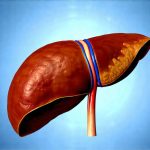The pursuit of optimal wellness often leads individuals towards various supplement protocols designed to support detoxification processes. These protocols, ranging from liver cleanse formulas to targeted nutrient boosts, aim to enhance the body’s natural ability to eliminate toxins. However, a frequently overlooked component in maximizing the effectiveness – and minimizing potential adverse reactions – is the intricate relationship between these protocols and the gut microbiome. The gut isn’t simply a digestive tract; it’s an ecosystem teeming with trillions of microorganisms that profoundly influence nearly every physiological system, including detoxification pathways. Failing to consider this dynamic interplay can lead to suboptimal results, amplified side effects (often referred to as “die-off” or Herxheimer reactions), and even compromised gut health itself.
Understanding how the gut microbiome interacts with detoxification is crucial for navigating supplement protocols safely and effectively. Detoxification isn’t a single event but rather a multi-stage process occurring primarily in the liver, kidneys, skin, lungs, and – significantly – within the gut itself. The microbes residing in our intestines play an active role in modifying toxins, influencing their absorption, metabolism, and eventual elimination. A healthy, diverse microbiome supports these processes, while dysbiosis (an imbalance in gut bacteria) can hinder them, creating a bottleneck for toxin removal and potentially exacerbating adverse reactions as mobilized toxins accumulate. This article will delve into the specific ways the gut microbiome influences detoxification responses during supplementation, offering insights into how to optimize this critical connection.
The Gut Microbiome’s Role in Detoxification Pathways
The liver is often considered the primary detox organ, but its work isn’t done in isolation. Phase I and Phase II detoxification processes within the liver transform toxins into less harmful substances. However, many of these intermediate metabolites – and the original toxins themselves – are ultimately excreted through the gut. This is where the microbiome steps in as a vital partner. Fiber fermentation by beneficial bacteria produces short-chain fatty acids (SCFAs) like butyrate, propionate, and acetate, which have numerous health benefits including supporting liver function and promoting regular bowel movements—essential for eliminating toxins.
Furthermore, certain gut microbes possess enzymatic capabilities to directly modify toxins. For example, some bacteria can deconjugate bile acids, facilitating the elimination of fat-soluble toxins. Others can break down environmental pollutants or convert harmful compounds into less toxic forms. A dysbiotic microbiome, lacking these crucial microbial players, reduces this capacity for toxin modification and excretion. This leads to increased systemic exposure to toxins and a greater burden on the liver and kidneys. The gut’s role is not just about eliminating what the liver processes; it’s an active participant in detoxification itself.
A compromised microbiome can also increase intestinal permeability, often referred to as “leaky gut.” When the barrier between the digestive tract and bloodstream becomes more porous, toxins and undigested food particles can leak into circulation, triggering systemic inflammation and further burdening detoxification pathways. This creates a vicious cycle where increased toxin load exacerbates gut dysbiosis and weakens the intestinal barrier, ultimately hindering effective detoxification. Therefore, supporting microbiome health is often paramount before, during, and after any detox protocol. Considering gut testing can provide valuable insight here.
Herxheimer Reactions & The Gut Microbiome
Herxheimer reactions, sometimes called “die-off” symptoms, are a common experience during detoxification protocols. They occur when toxins are rapidly released from tissues into the bloodstream faster than the body can eliminate them, resulting in flu-like symptoms such as fatigue, headache, muscle aches, skin rashes, and digestive upset. While often misinterpreted as a sign that a protocol isn’t working or is too aggressive, Herxheimer reactions actually indicate that detoxification is happening—but they can be significantly more intense and prolonged when the gut microbiome is imbalanced.
A healthy gut microbiome can help mitigate these reactions in several ways. As previously discussed, it aids in efficient toxin elimination through increased bile acid conjugation and SCFA production, reducing the overall toxin load on the body. A diverse microbiome also supports a robust immune system, which plays a role in managing the inflammatory response triggered by released toxins. In contrast, dysbiosis can exacerbate Herxheimer reactions due to several factors:
- Reduced ability to efficiently eliminate toxins.
- Increased intestinal permeability leading to greater systemic inflammation.
- Impaired immune function making it harder to manage the inflammatory cascade.
Therefore, addressing gut health before initiating a detox protocol can significantly minimize the severity of Herxheimer reactions and improve tolerance. Strategies like incorporating prebiotic-rich foods, fermented foods, or targeted probiotic supplementation can help optimize microbiome composition and enhance detoxification capacity. It’s important to note that probiotics aren’t always beneficial during intense detox protocols – certain strains might worsen symptoms in some individuals – so careful consideration and potentially professional guidance is recommended. Understanding emotional reactions can also help navigate these experiences.
Supplement Protocols & Microbiome Modulation
Many supplement protocols designed for detoxification include ingredients intended to support liver function, such as milk thistle, dandelion root, or N-acetyl cysteine (NAC). While these supplements can be beneficial, their impact on the gut microbiome should not be overlooked. Some detox supplements may contain compounds that directly affect microbial populations – either positively or negatively. For example, certain herbal remedies might have antimicrobial properties that unintentionally disrupt the gut ecosystem if used excessively.
Furthermore, the rapid mobilization of toxins during a protocol can also influence the microbiome. As toxins are released from tissues and excreted through the gut, they can alter the composition and function of microbial communities. This is particularly true for fat-soluble toxins which require bile acids for excretion – changes in bile acid metabolism directly impact the gut environment.
To support microbiome health during a supplement protocol:
- Prioritize prebiotics: Include prebiotic-rich foods (garlic, onions, leeks, asparagus) or consider a prebiotic supplement to nourish beneficial bacteria.
- Consider probiotic timing: If using probiotics, introduce them after the initial phase of toxin mobilization and assess individual tolerance.
- Hydrate adequately: Drinking plenty of water supports detoxification processes and helps flush toxins from the body.
- Support digestion: Enzymes can aid in breaking down food and reducing the burden on the gut during detox.
Gut-Focused Strategies for Optimizing Detoxification
Ultimately, a holistic approach to detoxification recognizes the central role of the gut microbiome. Rather than solely focusing on liver cleansing or targeted nutrient supplementation, integrating strategies that specifically address gut health is crucial. This includes:
- Dietary modifications: A diet rich in fiber from diverse plant sources supports microbial diversity and SCFA production. Reducing processed foods, sugar, and artificial sweeteners minimizes disruption to the microbiome.
- Stress management: Chronic stress negatively impacts gut health and can exacerbate dysbiosis. Implementing stress-reducing practices like meditation or yoga is beneficial.
- Mindful movement: Regular physical activity supports overall health and positively influences the gut microbiome.
- Personalized approach: Recognizing that each individual’s microbiome is unique, tailoring strategies to specific needs and sensitivities is essential. This may involve working with a healthcare professional specializing in functional medicine or gastroenterology to assess gut health and develop a personalized plan. Gut inflammation can significantly impact this process.
Boldly stated, optimizing the gut microbiome isn’t just an adjunct to detoxification; it is integral to successful and sustainable wellness. By recognizing this interconnectedness, individuals can navigate supplement protocols more effectively, minimize adverse reactions, and unlock their body’s natural ability to thrive. Understanding stool quality is a key component of this process. Additionally, consider how the order in which you eat influences your gut’s ability to process toxins. Finally, don’t underestimate the power of light snacks to maintain stable energy levels during detoxification. And remember that your gut microbiome can even play a role in managing motion sickness, which can sometimes be exacerbated by detox symptoms.


















